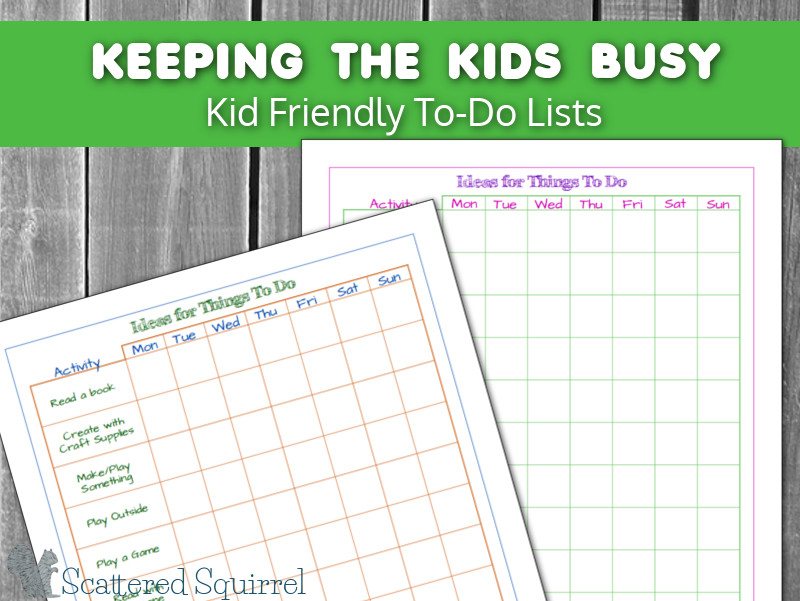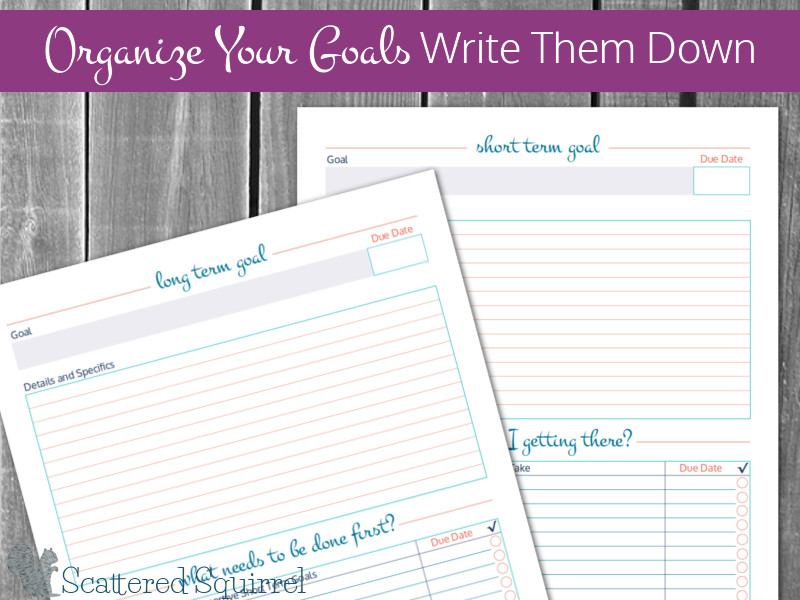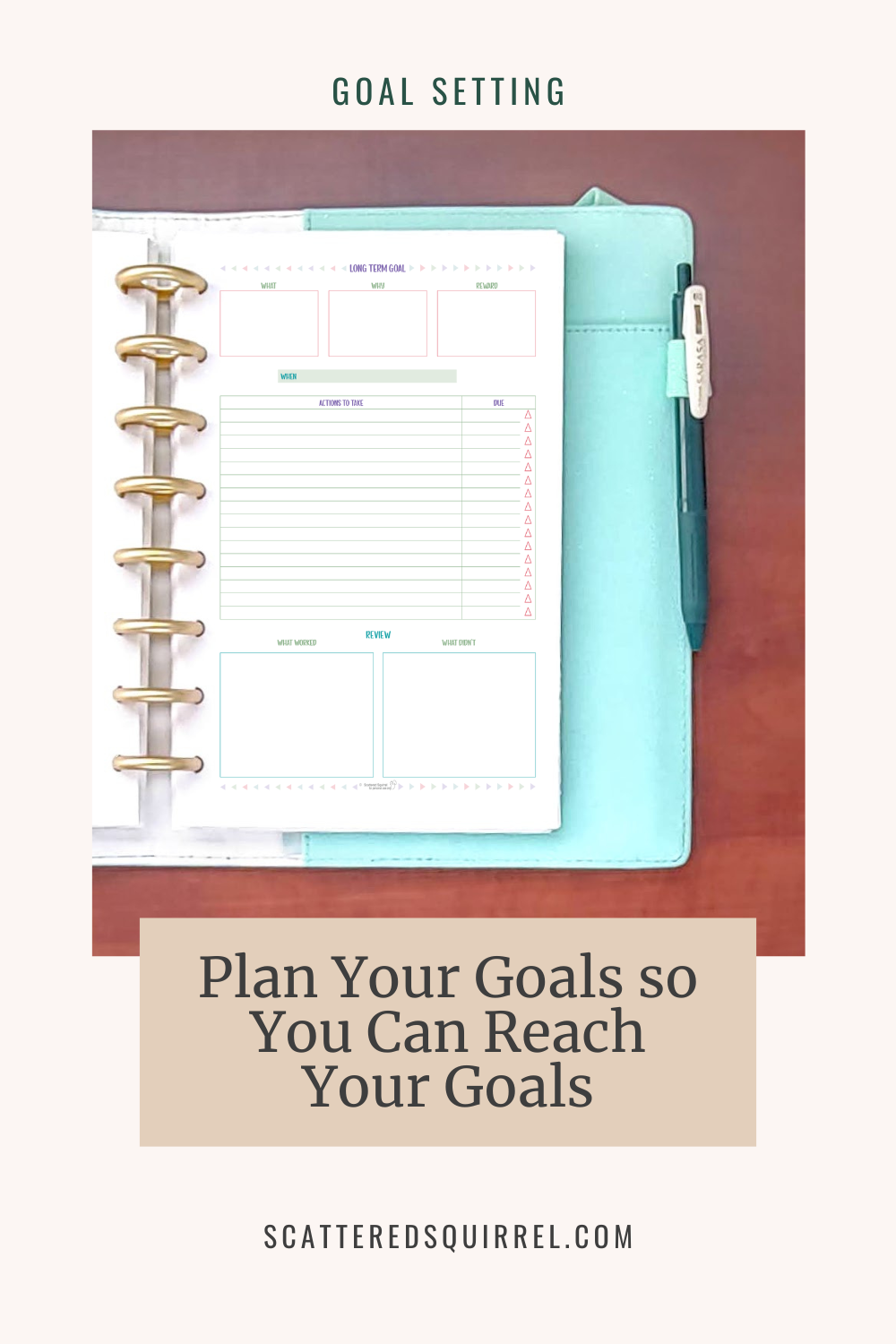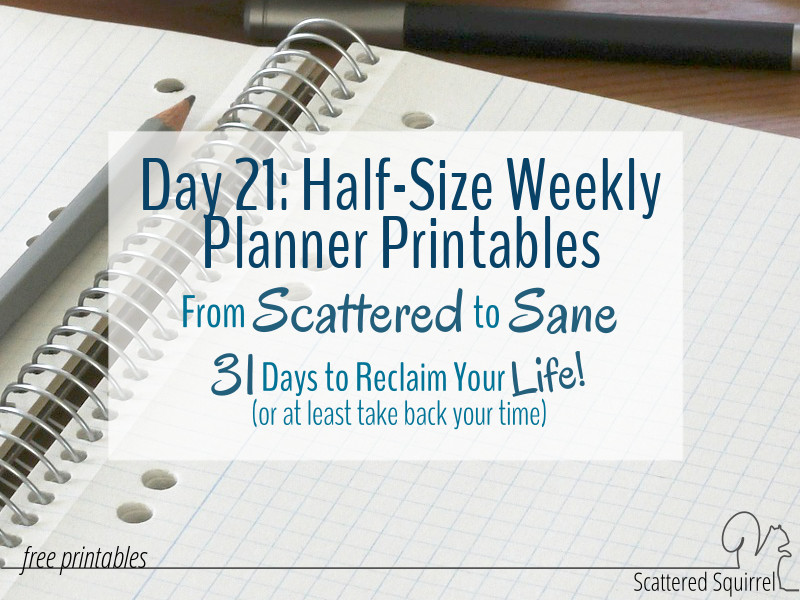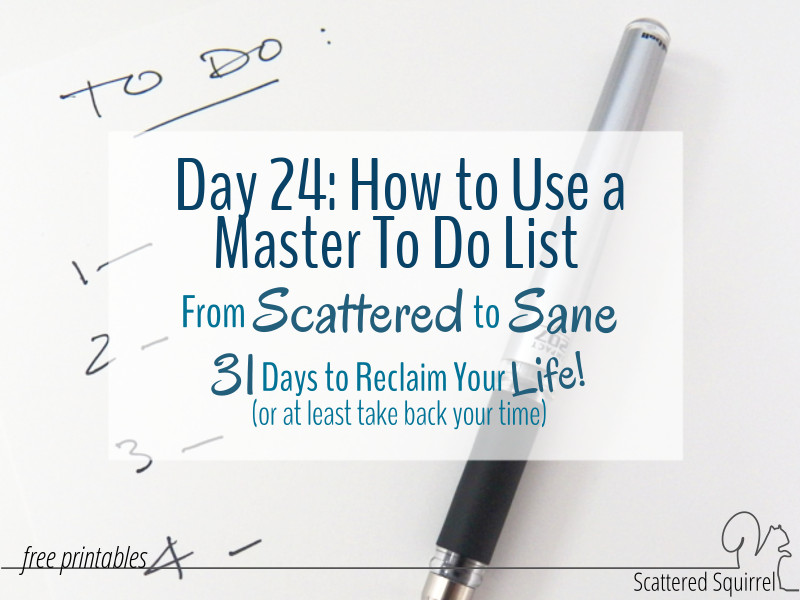Setting Boundaries – Learning to Let Go and Say No
As I sit here writing this post I glance at my planner and sigh. This is now day three of trying to write and aside from some handwritten notes, this is as far as I’ve gotten.
Phone calls come in that I answer. Family needs me for something. The dog needs to go outside and no-one else seems to hear his bark. I get up and my concentration is broken.
I am frustrated beyond belief, but not with the interruptions. My frustration lies soley with myself and the fact that lately I’ve sucked at setting boundaries on my time. Which makes today’s post all the more meaningful to me.
I said it at the very beginning of this series – I’m walking this path with you. And it seems that I really need to hear this reminder myself.
Setting boundaries is such an important step to take when you’re creating a time management system for yourself.
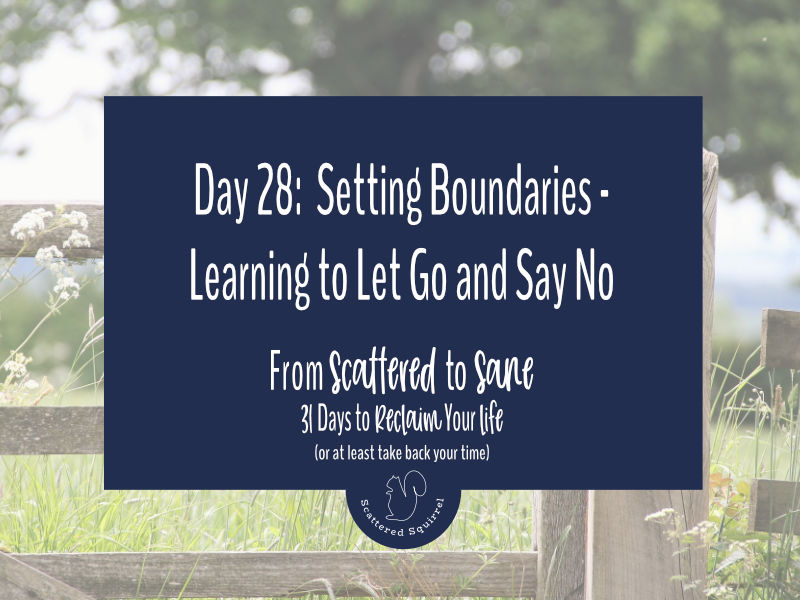
So far, in this series, we’ve talked about setting priorities and choosing how to spend our time. We’ve covered topics such as starting where you are and how perfection is a myth. The one thing we haven’t talked about is why setting boundaries is so important and how this action will tremendously help make taking back your time that much easier.
Why Setting Boundaries is So Important
The time we have each day is not unlimited and once it’s gone there is no way to get it back. So it’s not only important that we plan our days accordingly we also need to guard that time against distractions.
Boundaries help to make sure we don’t over schedule ourselves or take on too many projects and outside responsibilities. Not only are they great for us, but the help those around us know when they can and cannot interrupt us.
Guarding our time so we can focus on the things that really matter such as the tasks that must get done, the projects that need to get finished, or the household chores that cannot be ignored, give us the time to focus on the task at hand so we can finish it as efficiently as we can. Which in turn, gives us more time to spend with the people we love and on the things we enjoy doing.
In short, setting boundaries helps us be able to get things done more quickly and saves us time in the long run.
How to Set Realistic Boundaries
When it comes to creating these boundaries around our time, the first and most important thing to keep in mind is that they have to be realistic for you. This will look different for everyone.
Take a close look at your schedule for the next week.
Did you plan your days according to your priorities?
Did you leave room for time for taking care of you?
Do you have unscheduled time to allow for whatever pops up?
This one is important – do you comfortably have room for anything else?
Settinng your boundaries begins with learning to let go and say no to the things that don’t fit your schedule
Letting Go
We only have so much time in a day and only our days on this earth are finite. As much as we might want to do it all, it’s not realistic. One of the hardest things of creating a time management system that works for you isn’t finding time to do all the things. It’s figuring out what things you can’t.
The easiest way I’ve found to do this is to look at my priorities lists. If something I want to do doesn’t fit with my current priorities, I put it aside for another time.
I have a list that I keep in one of my planners called Ideas for Someday. I go through that list at least twice a year, just to see if anything on there is still something I want to do. And I see if any fit with what my priorities are right now.
It’s important to remember that letting go of something doesn’t mean we’ve failed. It means that we are putting what’s most important to us first. We’re making the most out of our time. As much as we may wish it, we cannot do all the things.
Saying No
This is one that can be hard for many people. I know I struggle with it myself. We like to help, provide assistance, tackle new goals, and be there for the people that matter to us. Sometimes though, we just don’t have the time.
Over committing ourselves, whether to other people or to ourselves only adds to the chaos of trying to manage our time.
It’s ok to say no to things that do not match your priorities or that you simply don’t have time for. Again, we cannot do everything, no matter how much we might want to.
When a new project comes onto your radar or someone asks if you can do something for or with them, ask yourself these questions.
Do I really want to do this?
Does this fit with my priorities?
Am I willing to trade doing something else to do this?
Next, check your schedule. Do you have time the time available to commit to this? Can you trade off doing something else to make the time?
If you keep important dates, appointments, events, and projects on your monthly calendar this will help you be able to look ahead to see what’s going on.
If you answered no to the questions or if you don’t have the time, say no. It’s as simple as that.
If you’d really like to be able to help out but your schedule is packed, you can still say no, but you can offer to help in another smaller way if that’s possible.
Guarding yOur Time
The last piece to the setting boundaries puzzle is guarding our time. This means taking responsibility for the things we want to do and ensuring that we limit distractions as much as possible.
There are many ways to guard our time and enforce our boundaries.
- use a do not disturb sign
- tell family or co-workers when we need to focus and ask that they not disturb us
- turn our phones to Do Not Disturb or silence the ringer
- turn off all the notifications for different apps and tabs on our computers
- close all tabs that we don’t need right at the moment
- close our doors
- go somewhere quiet to work (if possible)
- save screen time or special activities for the kids when we need to be able to dinner cooked or the housework done.
- delegate when we can
However we choose to guard our time, we also need to be willing to enforce those boundaries. It might mean reminding the people who interrupt us that we needed to be left alone. Maybe we need to change the time of day we typically tackle those things.
Noone else will guard our time for us. The more we allow interruptions, the longer something will take us.
Challenge Check In
Setting boundaries starts with us. It starts with what we commit ourselves to and choosing what’s most important.
It means learning to let go of the things that don’t fit our current priorities. It’s saying no to the thing we don’t have time to do. And it’s guarding our time so that we can focus on the task at hand to free up more time for fun things later.
I’d love to hear from you. Do you struggle with setting and sticking to boundaries on how you’re spending your time? Drop a line in the comments below and let’s keep this conversation going.




